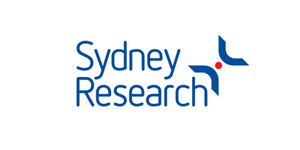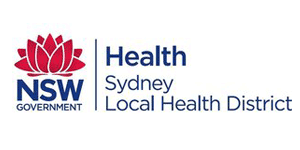The Woolcock Institute of Medical Research

A simple test with breathtaking potential
National and international guidelines for asthma management have changed radically in the past five years. The Woolcock’s Professor Helen Reddel, in her role as Chair of the Science Committee of the Global Initiative for Asthma (GINA) and as a member of the Australian Asthma Handbook Guidelines Committee, has been at the forefront of this work.
Now, in her role as Research Leader of the Woolcock’s Clinical Management group (which looks at ways of improving the assessment and management of people with respiratory disease), Professor Reddel is hoping to revolutionise respiratory medicine, not just for people with asthma, but also for people who present to their GP with respiratory symptoms such as breathlessness or cough. These can be caused by any number of conditions, and not just lung problems.
DIAGNOSIS REVOLUTION
Earlier this month, Professor Reddel was awarded a $2.7 million NHMRC Investigator Grant which will, in part, go towards developing and evaluating biomarkers that can pinpoint the causes of respiratory symptoms including breathlessness and cough.
It’s based on breathomics which is the analysis of volatile organic compounds in breath, with the aim of identifying which of a range of conditions such as asthma, chronic obstructive pulmonary disease (COPD), anemia, lung cancer, heart failure, kyphoscoliosis, over- or under-active thyroid, pulmonary fibrosis and pulmonary hypertension may be the likely cause of a person’s respiratory symptoms.
“My particular interest is in the potential use of breathomics in primary care to help guide diagnosis for patients presenting with respiratory symptoms. At the moment, if someone says to their GP ‘I'm breathless’, the GP has to consider whether this is likely to be a heart problem, a lung problem, a hormone problem, lack of fitness, or problems with weight, and they arrange diagnostic tests according to which of those they think is most likely. Sometimes, for example, they’ll go down the path of investigating for cardiac disease, and won’t find a cause for the breathlessness, so then the GP has to start again with investigations for other potential causes. That's hugely costly to the health system and frustrating for the patient,” says Professor Reddel.
“What we need is a point-of-care test that will allow triaging of the initial investigations. We will be working on developing a simple breath test, that will provide immediate feedback from comparison with results already in the cloud for many thousands of patients, which will tell you whether it is likely a problem with their heart or their lungs, or even which particular type of problem with their lungs. This information can then allow the GP to provide specific treatment, or arrange more specific investigations. That would be revolutionary.”
Want to stay up to date with our research on sleep and respiratory conditions?
Sign up to our monthly newsletter
BODY OF EVIDENCE
And it’s entirely possible in the foreseeable future, with a number of recent international studies showing that breathomics can distinguish respiratory disease with very high levels of accuracy.
“This has been shown for sarcoidosis, interstitial lung disease, lung cancer and tuberculosis (TB). You can distinguish people who have COPD from those who have lung cancer. One breathomics study identified people with lung cancer up to two years before their clinical diagnosis. There’s also a study in the UK of people who presented to the emergency department with shortness of breath, and breathomics could distinguish between cardiac failure, pneumonia, COPD exacerbations and asthma exacerbations.”
“We need more specific biomarkers to guide initial investigations and escalate to precision treatment. The breath comes from the organ of interest. Your breath is in direct contact with your lungs and your blood so it's not surprising that it has huge potential.”
GLOBAL REACH
The current diagnostic pathway for people experiencing chronic breathlessness includes spirometry, pulse oximetry, ECG, thyroid function, blood tests, chest CT scan and full lung function testing, followed by specialist referral if needed. The cost of these tests can amount to hundreds or even thousands of dollars, and presents a major barrier to global equity of healthcare. In-low and middle-income countries, testing for people with breathlessness is largely limited to a sputum sample for TB, blood count and chest x-ray.
The cost for the proposed breath test would likely be less than $50, and even less with a Medicare rebate.
Professor Reddel is working on developing and validating breath patterns associated with different causes of respiratory symptoms. The ultimate aim is to have a device sitting on the GP's desk or in the emergency department that can guide investigation and treatment when patients present with a cough, shortness of breath or wheeze.
“Through our collaborations with GPs, specialists, data analysts and health economists at Macquarie University and Macquarie University Hospital, we should be able to improve the current algorithms. We will start our work in a hospital clinic setting and expand to primary care evaluation,” says Professor Reddel.
“Ultimately, I want this tool to be able to be used in low- and middle-income countries as a portable single test triage for people with respiratory symptoms. It has massive potential globally.”










